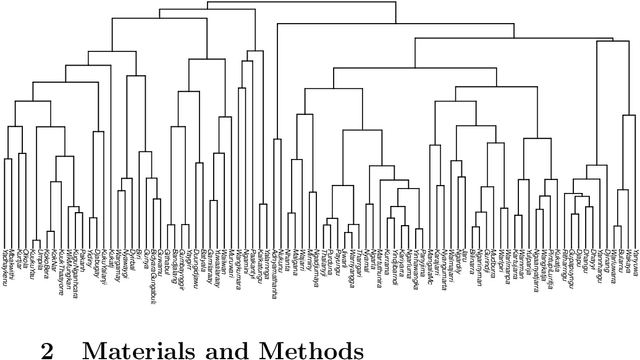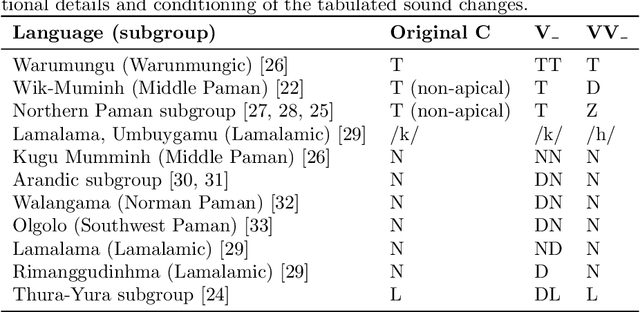Erich Round
The natural stability of autonomous morphology
Nov 06, 2024Abstract:Autonomous morphology, such as inflection class systems and paradigmatic distribution patterns, is widespread and diachronically resilient in natural language. Why this should be so has remained unclear given that autonomous morphology imposes learning costs, offers no clear benefit relative to its absence and could easily be removed by the analogical forces which are constantly reshaping it. Here we propose an explanation for the resilience of autonomous morphology, in terms of a diachronic dynamic of attraction and repulsion between morphomic categories, which emerges spontaneously from a simple paradigm cell filling process. Employing computational evolutionary models, our key innovation is to bring to light the role of `dissociative evidence', i.e., evidence for inflectional distinctiveness which a rational reasoner will have access to during analogical inference. Dissociative evidence creates a repulsion dynamic which prevents morphomic classes from collapsing together entirely, i.e., undergoing complete levelling. As we probe alternative models, we reveal the limits of conditional entropy as a measure for predictability in systems that are undergoing change. Finally, we demonstrate that autonomous morphology, far from being `unnatural' (e.g. \citealt{Aronoff1994}), is rather the natural (emergent) consequence of a natural (rational) process of inference applied to inflectional systems.
Evolution and trade-off dynamics of functional load
Dec 22, 2021



Abstract:Function Load (FL) quantifies the contributions by phonological contrasts to distinctions made across the lexicon. Previous research has linked particularly low values of FL to sound change. Here we broaden the scope of enquiry into FL, to its evolution at all values. We apply phylogenetic methods to examine the diachronic evolution of FL across 90 languages of the Pama-Nyungan (PN) family of Australia. We find a high degree of phylogenetic signal in FL. Though phylogenetic signal has been reported for phonological structures, such as phonotactics, its detection in measures of phonological function is novel. We also find a significant, negative correlation between the FL of vowel length and of the following consonant, that is, a deep-time historical trade-off dynamic, which we relate to known allophony in modern PN languages and compensatory sound changes in their past. The finding reveals a historical dynamic, similar to transphonologization, which we characterize as a flow of contrastiveness between subsystems of the phonology. Recurring across a language family which spans a whole continent and many millennia of time depth, our finding provides one of the most compelling examples yet of Sapir's 'drift' hypothesis, of non-accidentally parallel development in historically related languages.
 Add to Chrome
Add to Chrome Add to Firefox
Add to Firefox Add to Edge
Add to Edge